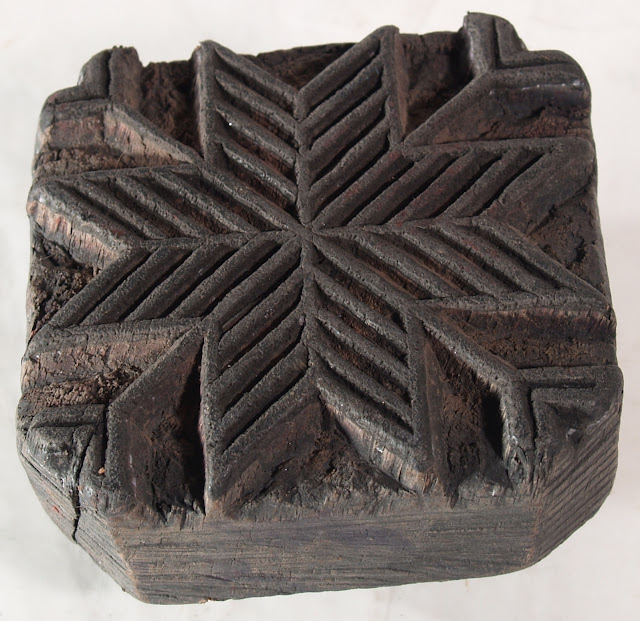
Woodblock printing is an artisanal hand-process of printing patterns on textiles (or other materials, such as paper), by using carved wooden blocks. Woodblocks for textile printing are often carved out of box, lime, holly, sycamore, or pear wood. A substantial thickness of wood is required to prevent warping. A design for a single or repeatable pattern in a single color, is drawn or transferred onto the finely planed surface of a wood block that is then cut and shaped to reflect the design's form factor. A blockcutter carves the wood, beginning with the intended design's heavier elements, and gradually moving to it's finer elements. A finished block has the appearance of a bas relief, or letterpress type. The most intricate details require the greatest skill and control to produce, and are the first to wear down during printing production. A handle often made of a softer wood, such as pine, is typically attached to the block.


Kalamkari-style block-printed cotton textiles, such as those found at Common Thread, are produced in India using these types of woodblocks. The word Kalamkari consists of the Persian words kalam (pen) and kari (craftmanship), meaning to draw with a pen. Today, the traditional hand-drawn surface designs using vegetable dyes have been supplemented and replaced by printing production with woodblocks. This is in a sense, taking a hand-drawn image and creating patterns by repeating it. The term Kalamkari often still applies. An example of how words and meanings may evolve over time.


Discarded tools of an ancient and thriving trade, woodblocks are simple one-of-a-kind objects of archetypal beauty. Common Thread has just received over 100 woodblocks--many of which are still functional for printing on fabric, paper, or wood. These blocks are also popular with ceramicists for producing patterns and textures in clay. Come see. Come let your creative instincts wander--into Common Thread!

